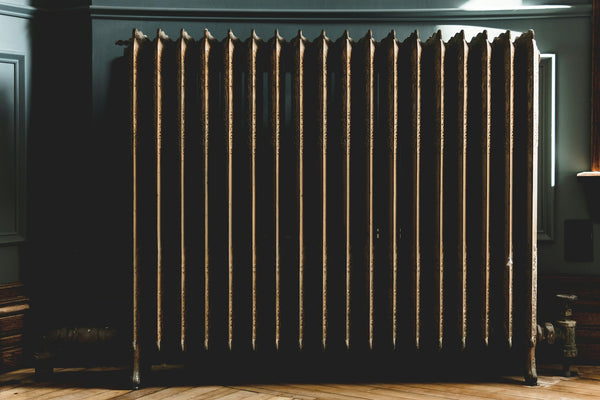
(502) 783-7995
(502) 783-7995


Homeowners comparing underfloor heating vs radiators are usually chasing the same goals: better comfort, smarter efficiency, and a cleaner look. At ProLux, we help you choose the right system for your space, whether that is a fast-fitting floor heating mat or a fully flexible floor heating cable. In this guide we answer the big questions, including is underfloor heating better than radiators, and how comfort, costs, and efficiency stack up in real homes.
Radiators warm the air around the metal panel. That air rises, cools, and sinks, creating a convection loop. The result can be warm heads and cooler feet, hot spots near the radiator, and colder zones by windows or corners. Radiators also introduce safety considerations, as their hot surfaces can be risky for children, pets, or elderly family members.
Electric underfloor heating reverses the experience. Our systems use radiant heat, so there is zero air movement and no cold patches. Heat radiates from the entire floor surface and rises evenly into the whole room, creating a steady, balanced warmth. The absence of air currents means dust stays settled, which makes interiors feel healthier and calmer.
Do you need radiators with underfloor heating?
In many renovations and new builds, a properly sized underfloor system can replace radiators in the rooms where it is installed. In partial retrofits you can mix systems, using underfloor in key spaces like kitchens and bathrooms and keeping radiators elsewhere until the next phase of upgrades.
Underfloor heating feels warmer at lower thermostat settings because the warmth is right where you walk and live. Radiators, on the other hand, can leave air stuffy near the panel and cooler at floor level. Radiant floors are invisible and silent, which helps interiors feel uncluttered and calm. If you are deciding on underfloor heating or radiators for a space where comfort matters, radiant heat provides a cleaner and more consistent experience.
A common question is "Is underfloor heating more efficient than radiators?". Electric underfloor systems operate at lower temperatures while delivering the same or greater perceived warmth, thanks to radiant distribution. That means less energy is required to achieve comfort. Fenestration (your windows and glazing quality), insulation, and floor finish all affect results, but with the right setup, radiant systems frequently outperform radiators.
Smart controls matter too. A floor-sensing thermostat keeps surface temperatures consistent and runs the system only when you need it. Explore dedicated floor heating thermostats to fine-tune both comfort and running costs.
| Feature | Underfloor Heating | Radiators |
|---|---|---|
| Heat distribution | Even radiant warmth across entire floor, no cold patches | Hot near the panel, cooler across the room |
| Perceived comfort | Warm feet and a steady room feel | Warmer air at head height, cooler underfoot |
| Air movement | Zero air movement, dust stays settled | Convection currents move dust and allergens |
| Aesthetics and space | Invisible system, zero wall footprint | Bulky panels impact layout and design |
| Safety | Hidden beneath floor, no hot surfaces | Hot to touch, risky for children and pets |
When people ask about underfloor heating vs radiators cost, the honest answer is that fenestration, insulation, room size, and control strategy all matter. Radiant floors are often competitive in running costs because they target the surface you use and maintain steady warmth at lower setpoints. In the next section, we break down underfloor heating vs radiators running costs with scenarios, including the cost of running electric underfloor heating vs radiators under common tariffs.
Comparing underfloor heating vs radiators running costs depends on insulation, fenestration (windows and glazing), floor finish, and how you schedule heat. Underfloor systems often feel comfortable at lower thermostat settings because the warmth is right underfoot, which helps trim energy use. Here is a simple, illustrative snapshot to help you compare.
| Room example | Typical output needed | Underfloor heating (est. kWh per hour) |
Radiators (est. kWh per hour) |
Notes |
|---|---|---|---|---|
| Small bathroom ~80 sq ft | 800–1,000 W | 0.8–1.0 kWh | 1.0–1.2 kWh | UFH warms the whole floor surface evenly |
| Kitchen ~120 sq ft | 1.2–1.5 kW | 1.2–1.5 kWh | 1.4–1.7 kWh | Even radiant heat reduces peaks and cycling |
| Living area ~200 sq ft | 2.0–2.5 kW | 2.0–2.5 kWh | 2.3–2.8 kWh | Better distribution prevents overheating near panels |
Estimates are illustrative and depend on insulation, windows, target temperature, and local tariffs. Improving insulation beneath the heated floor can further lower energy use. Consider floor heating insulation to direct warmth upward and shorten warm-up times.
Choosing underfloor heating or radiators often comes down to project timing. If you are already replacing floors, adding electric underfloor heating is a smart upgrade. Here is how typical paths look, so you can plan a budget and timeline.
Everything is open and accessible, which keeps labor predictable. Heating mats shine for simple rectangular rooms. Cables are ideal when you want custom spacing or need to work around features like islands or built-ins. Always follow installation instructions for recommended cable spacing, as adjusting it correctly is key to safe, effective output.
Many kitchens, bathrooms, and living areas get their upgrade here. You can install mats or cables under almost any hard floor covering, from tile and stone to engineered wood or vinyl. For extra stability and neat cable retention, pair cable layouts with purpose-built heating membranes.
Unlike radiators, you cannot install underfloor heating without a new floor covering. A retrofit means removing the old surface and replacing it, which is why UFH is usually added during planned flooring projects. For small areas where you want a comfort boost, this can be an excellent add-on when replacing finishes anyway.
If your room is a simple rectangle and time is tight, mats are the easiest choice. If the layout is complex or you need higher output potential, cables provide flexibility when installed according to instructions. In whole-home upgrades, many people mix both, using mats where speed matters and cables where precision is required.
Is underfloor heating better than radiators?
For comfort, efficiency, and safety, radiant floors often win. For pure upfront cost on a simple replacement, radiators can be cheaper, but they take up space and can leave cooler floors.
Do you need radiators with underfloor heating?
Not necessarily. A correctly sized underfloor system can heat the room on its own. In phased renovations, a mixed approach is common until the whole home is updated.
Underfloor heating cost vs radiators?
Installation depends on the project scope. The cost of running electric underfloor heating vs radiators varies with insulation and controls, but radiant floors achieve the same comfort at lower thermostat settings, which keeps usage competitive.
Every home is unique. If you want help choosing the right path for your layout, budget, and lifestyle, visit ProLux Materials for expert guidance and a tailored plan that makes comfort and costs work in your favor.

Our under floor heating experts will work on the design and layout of your project, for free!